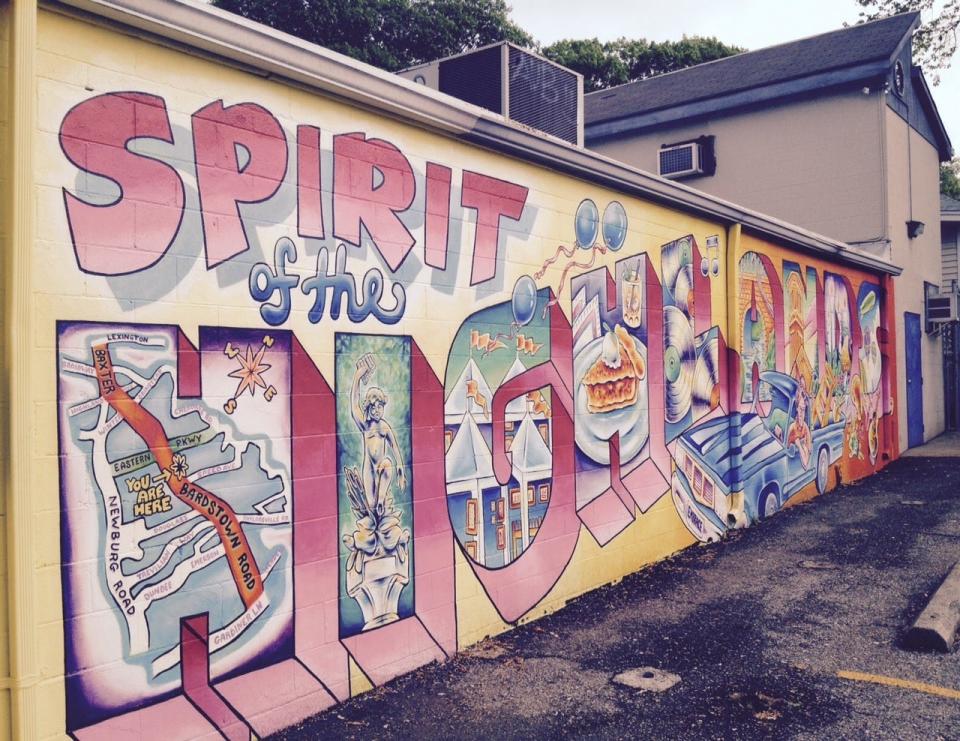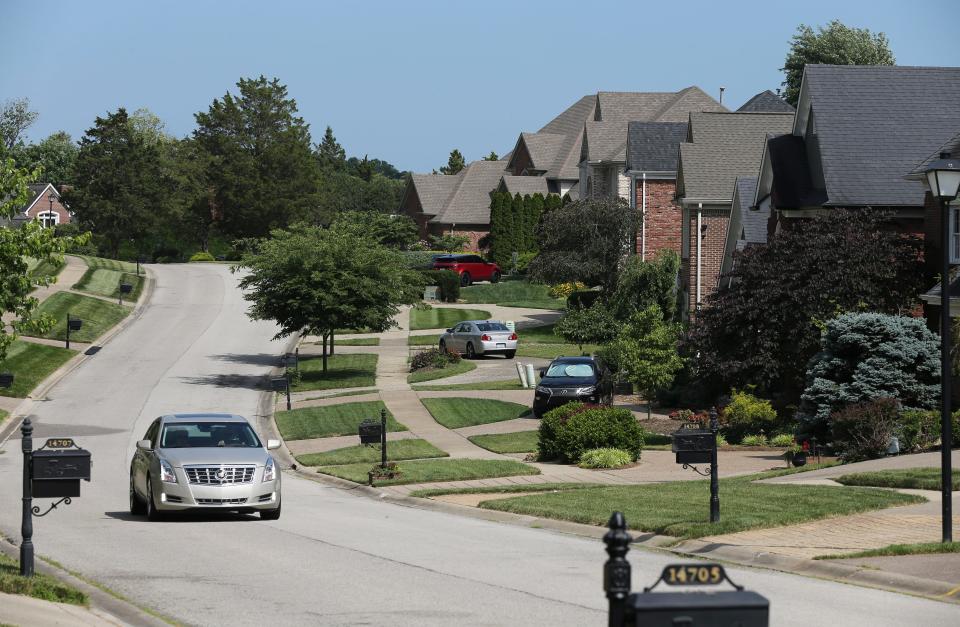Do you live in a Louisville 'boburb'? Here's what your neighborhood reveals about you
Some city neighborhoods are walkable, mixed-use, dense places, with coffeehouses, bookstores, arts venues and liberals. This is the “boburb,” the natural home of the “bourgeois bohemians” – people with a bourgeois work ethic but bohemian cultural tastes. In Louisville, the Highlands is an exemplary boburb.
By contrast, out in the suburbs are car-dependent, residential-only, spread-out gated communities where swim clubs, golf courses, megachurches and conservative families abide. Many Louisville subdivisions could represent the suburban ideal, from the postwar “sitcom suburbs” such as Barbourmeade to the “McMansion” neighborhoods beyond the Snyder, such as Lake Forest. Such subdivisions might be imagined as a gated community called “The Glens.”
Both kinds of communities are full of college-educated middle and upper-middle-class people. So why do some choose one way to live, and some the other?
More: What are Louisville's most and least diverse neighborhoods? The answers may surprise you

How we choose
A 2014 Pew Political Polarization Survey asked “Imagine for a moment that you are moving to another community. Would you prefer to live in …? A) A community where the houses are larger and farther apart, but schools, stores and restaurants are several miles away; or B) A community where the houses are smaller and closer to each other, but schools, stores and restaurants are within walking distance.”Given those two choices, Americans are evenly split – 49% choosing the suburbs, 48% choosing the boburbs.
When I asked Louisvillians “Why did you choose to live where you live?” their answers reflected many factors, some shallow, some deep. Material reasons – how much does it cost for the space? How long is the commute? What would the resale value be like? – are relevant. More cultural reasons also figure, such as the quality of the schools, the beauty of the house, the level of community interaction. And deep matters of worldview – imagining the world as mostly scary or mostly trustworthy — shape our ideal neighborhood, as well.
The people who chose to live in the Highlands knew the reputation of the neighborhood. The reputation of the Highlands was also important to some people who deliberately chose against it, preferring either bohemia or, more often, suburbia. There was an asymmetry between choosing the boburb – the Highlands or Crescent Hill – versus choosing a suburb.
The boburbs were specific neighborhoods, with distinctive special features. The suburbs were a type of neighborhood, which could be met by any one of a number of subdivisions. Unless you were trying to live near relatives or near a job, few people were committed to one specific suburb, in the way that other people were committed to a specific boburb.
A suburb is a kind of space. A boburb is a specific place.

Help us report: What do we need to know about your neighborhood? Tell us in this form
Two families
The experiences of two families are instructive. Both were white, married, multi-child, upper-middle-class business families. They became friends when living in similar upper-middle-class suburban subdivisions. When their children were high schoolers, both families decided to change neighborhoods.
One built a large house (over 6,000 square feet) on a multi-acre lot in a gated community in the far reaches of the county. They sent their three children to a suburban religious school. They were very active in their megachurch, and often hosted their children’s youth groups and sports teams. They are conservative, religiously and politically. They had a nodding acquaintance with several of their neighbors, but did not socialize with them.
The other couple moved to the Highlands, to a 2,400-square-foot house in walking distance of Bardstown Road. Their two children went to different public schools, drawn by distinctive magnet programs. Of the Highlands, they enthused that they “loved it from day one.” They liked the big trees and the smaller yard. They were “big foodies” and enjoyed walking to non-chain, locally-owned restaurants.
They like the diversity of age, lifestyle and ethnicity, and want their children to see it – that is also why they sent their kids to public schools. They met other dog walkers, joined a local book club, had regular happy hours with the other residents, and joined a local, walking-distance (liberal) church. “We knew our neighbors better within a year,” they said, “than we did in six years” in their old neighborhood.
The overwhelming virtue of the boburb is that it is more interesting to adults and youth. Most people with a choice like to go there sometimes, and many people I talked to wanted to live there when they were not raising small children, both before and, at least in imagination, after. And if they were never going to raise small children, the boburb was their first choice all along.
The great virtue of the suburbs is that they are the safest place to raise small children. This is why most families with a choice, vote with their feet, generation after generation, by moving to the suburbs. Raising the next generation is the single most important project of any society. The suburbs are where most middle-class people live in the small-children phase of life.
Whether you think it would be easier or harder to raise teenagers in the suburb or the boburb depends on how fearful you are. For the more fearful, teenagers are more likely to seek dangers than little kids are, so it is more important to keep them in a controlled environment. For the less fearful, teenagers can do more things for themselves, so it is less important to control their environment, and a positive good to encourage them to develop independence.
The suburbs are better at their one job than the boburbs are at any one of their many jobs – except the meta-project of fostering a diversity of projects. The suburbs are a more-sought choice for those families engaged in the project of raising small children.
By the same token, though, families are less loyal to their suburb when that project is done. The boburbs foster intense place attachment because they foster a variety of projects throughout the life course.
The suburbs are a monoculture; the boburbs are the city’s most diverse ecology.

Beau Weston is the Van Winkle Professor of Sociology at Centre College. This article is based on Between Bohemia and Suburbia: Boburbia in the USA, published by Routledge in 2019.
This article originally appeared on Louisville Courier Journal: Do you live in a boburb? Here's what your neighborhood says about you

